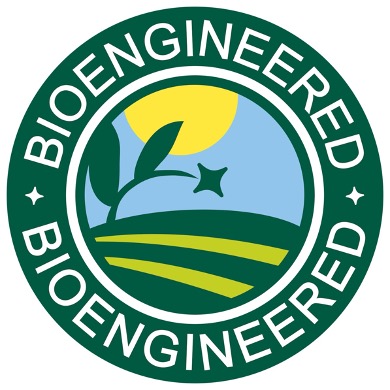The new year is here, and that means that historic new disclosure requirements for biotech foods are now in effect.
In 2016, Congress shut down state GMO labeling efforts in favor of the new law that requires disclosure of bioengineered ingredients. So as of Saturday, food products with detectable levels of BE material must be labeled a “bioengineered food” or a product that “contains a bioengineered food ingredient.” Products not in compliance must be withheld from the marketplace. 
The new law faces a legal challenge by the Center for Food Safety, a D.C.-based advocacy group that has long fought for more stringent regulation of agricultural biotechnology.
“These regulations are not about informing the public but rather designed to allow corporations to hide their use of genetically engineered ingredients from their customers,” said the group’s executive director, Andrew Kimbrell.
Keep in mind: USDA’s Agricultural Marketing Service has set up a website where it will take complaints about labeling compliance.
SCOTUS looking at key ag cases
Some sectors of the ag industry are eagerly watching the Supreme Court as the justices decide whether to hear petitions filed over housing standards for sows, the summertime use of E15, and wetlands regulation. The court is scheduled to discuss the petitions Friday and announce its decisions a week from today.
All of the cases face stiff odds, given that the court only accepts for review a fraction of the petitions it receives:
E15 case: A petition by Growth Energy seeks review of an appeals court decision that found the Clean Air Act does not authorize summertime use of E15. But the issue may be too narrow for the court to take up.
Prop 12: A petition by the National Pork Producers Council and American Farm Bureau Federation seeks to block enforcement of animal housing standards under California’s Proposition 12. The high court rejected an earlier challenge to the law.
Wetlands: The last petition of interest was filed by Idaho landowners who want the court to look again at federal wetlands regulation. The court may be loath to address the issue given that EPA and the Army Corps of Engineers are writing a new WOTUS rule defining federal jurisdiction under the Clean Water Act.
For more on this week’s D.C. agenda, see our Washington Week Ahead.
Japan goes in big for US corn
Net export sales of U.S. corn — old crop and new — got a major boost from Japanese buyers in late December. Japanese customers committed in the week of Dec. 17-23 to buy 385,800 metric tons of U.S. corn for delivery in the 2021-22 marketing year, helping push total U.S. sales to more than 1.2 million tons.
But Japanese buyers also purchased 60,000 tons for delivery in the 2022-23 marketing year, which doesn’t begin until Sept. 1.
The U.S. also shipped 189,900 tons of corn to Japan during the seven-day period, but exports to Mexico and China were larger: The U.S. shipped 278,300 tons to Mexico and 277,000 tons to China. 
Ports may implement container fees
The ports of Los Angeles and Long Beach could begin today to impose hefty fees on container owners for leaving the metal crates at the facilities for extended periods, according to the shipping company Maersk, which says the number of aging containers on the docks have been reduced by 41% since late October.
The mere threat of the fines has been successful so far in prompting container owners to remove them from the docks, Port of Los Angeles Director Gene Seroka said last month in a webinar hosted by the Blue Dog Democrats. The fees – designed to stop container owners from treating the docks as warehouses and free up space for trade – were first planned to go into effect Nov. 15, but that was postponed to Dec. 27 and then postponed again until today.
Maersk says the “continued improvements have resulted in the weekly postponement of the fee.”
USDA’s chief plant pest eradicator steps down
Friday was the last day on the job at USDA for Osama El-Lissy, the long-time deputy administrator for at the Plant Protection and Quarantine division of USDA’s Animal and Plant Health Inspection Service.
El-Lissy, who played a significant role in negotiating plant health agreements in the U.S.-China Phase One trade deal, spent more than two decades at USDA. He also played a major role in eradicating the giant African snail, pink bollworm, European grapevine moth and other pests that can do billions of dollars in damage to U.S. crops.
APHIS Associate Administrator Mark Davidson will fill in for El-Lissy until a replacement is named. 
USDA: Water efficiency measures slow to catch on
Farmers who rely on irrigation have become more efficient over the years, but many water-saving measures aren’t in widespread use yet, according to a study by USDA’s Economic Research Service.
From 2003-2018, the share of irrigated farms using soil moisture sensors for irrigation scheduling increased by 50%. Still, only 12% of irrigated farms use the equipment. In 2018, about 28% of farms cited financing as a barrier to installing new conservation measures. Another deterrent, cited by more than 15% of farms, is the uncertainty about future water availability.
Total water usage for irrigation declined by 21% between 1980 and 2015. The average amount used per acre decreased by 19%.
By the way. Corn is the most widely irrigated crop, accounting for 14 million acres or more than 25% of the irrigated cropland in 2017. However, that was less than 15% of all corn acreage that year. A majority of land used for vegetables or orchards was irrigated.
He said it. “Californians are trying to use their state's massive economic power to impose regulations on pig farmers nationwide. Other states do not tell California how to grow grapes or almonds.” - Sen. Chuck Grassley, R-Iowa., telling reporters that he wants the Supreme Court to block enforcement of Prop 12.
Questions, comments, tips? Email philip@agri-pulse.com.




